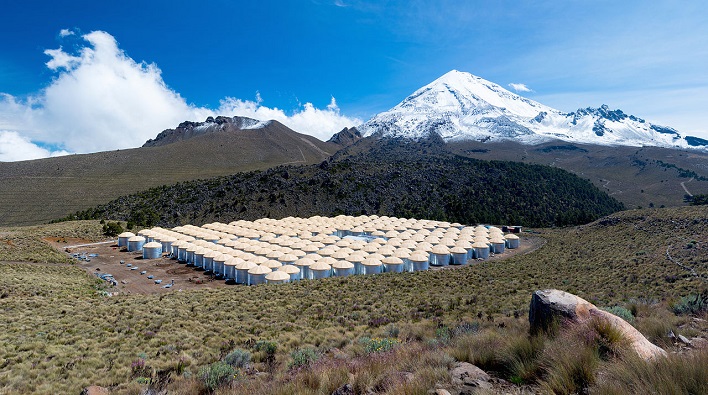MSU Researchers Stun Scientists With Perplexing Record Bright Sunlight Discovery

Humankind has been trying to figure out the bright orb in the sky since the beginning of time. In more recent years, scientists have been able to take advantage of advanced technology, like NASA's Parker Solar Probe, to investigate Earth's star in ways never before available. Now, an international team utilizing the High-Altitude Water Cherenkov Observatory, or HAWC, has detected the highest-energy light emitting from the sun ever.
"The sun is more surprising than we knew," remarked Mehr Un Nisa, a postdoctoral research assistant at Michigan State University. "We thought we had this star figured out, but that's not the case."
Nisa explained that most other observatories were unable to view the sun, because they only operated at night. HAWC is unique from most other observatories, in that it works around the clock. HAWC also appears much different than other telescopes, as it uses a network of 300 large water tanks that each hold about 200 metric tons of water, rather than the typical tube outfitted with glass lenses. The observatory is located between two dormant volcano peaks in Mexico at more than 13,000 feet above sea level.

As the particles interact with water in HAWC's tanks, they produce what is known as Cherenkov radiation that can be detected with the instruments within the observatory. The team has been collecting data from HAWC since 2015, and in 2021 it had enough data to begin looking at the sun's gamma rays in a more detailed manner.
"After looking at six years' worth of data, out popped this excess of gamma rays," explained Nisa. "When we first saw it, we were like, 'We definitely messed this up. The sun cannot be this bright at these energies."

But as with many new discoveries, this one has raised even more questions than answers. Nisa says it will give solar scientists a reason to "scratch their heads" over trying to figure out how these gamma rays achieve such high energies and what role the sun's magnetic fields play in the phenomenon.
"This shows that HAWC is adding to our knowledge of our galaxy at the highest energies, and it's opening up questions about our very own sun," added Nisa. "It's making us see things in a different light. Literally."

